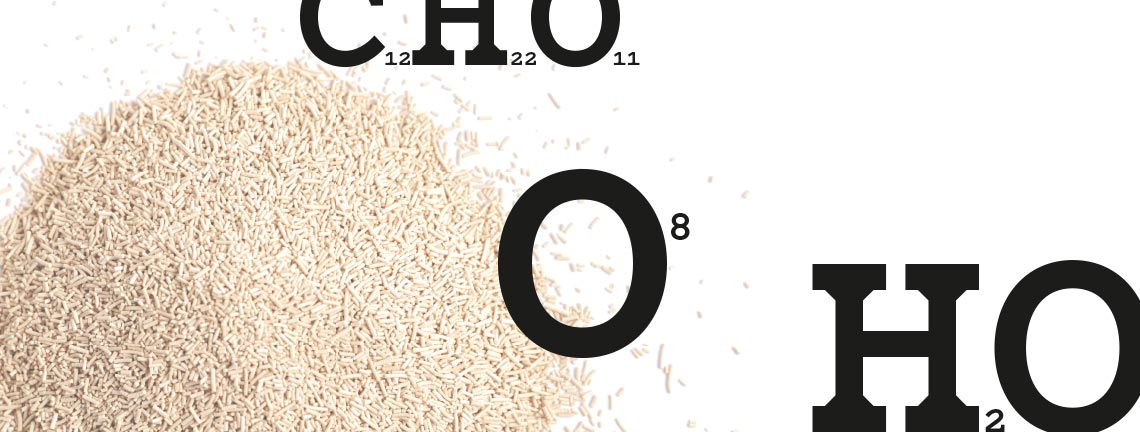Despite our age difference, I considered Rabbi Bernard Levy, ob”m, a dear friend. Rabbi Levy provided the kosher certification for Planter’s Peanuts in Suffolk, Virginia where I was the Quality Control Manager in the late 1970s. Management had assigned me to the rabbi, probably because I was one of no more than two Jews in town. Later, I moved on to Fleischmann’s Vinegar and Yeast as Vice President of Research & Development in Oakland, California where I continued to enjoy Bernard’s friendship. It has been 30 years since his passing and I think of him often. This he has reciprocated by visiting with me in my dreams.
I learned a lot about Yiddishkeit from Rabbi Levy. I especially enjoyed listening to his repertoire of life experiences gained during his travels beyond the Iron Curtain as emissary of the Lubavitcher Rebbe. If the reader were to ask me what it was like to be with him, I would answer: “Where else can one bask in the presence of a holy person and learn so much with complete fun and joy?” As I recall, I started to feel sad just a few hours before his departure to New York at the end of each visit.
What was this promise that I made to the rabbi that took 30 years to come to fruition? I promised Rabbi Levy that I would write a detailed explanation about the making of shmurah matzah.
We were approaching Passover 1986 (which would be Rabbi Levy’s last Passover before his passing) so matzah was one of the topics of discussion. I asked the rabbi, “Why did eating matzah became one of the most important part of the Haggadah (together with Pesach and Maror)? Why had it survived the generations and become so important (Shemos 12:39 and Haggadah), becoming equal to, or perhaps greater than, a sea of miracles? What is the big deal about not having the time to bake leavened bread? And besides, if they liked bread so much, why didn’t they just make sure to leave enough time to prepare real bread?
Rabbi Levy brought me a box of round handmade shmurah matzah (meaning ‘guarded’ in Hebrew) and said that this type of matzah has remained the same from the time our forefathers, when they had to carry the unleavened dough on their backs while leaving Egypt. After comparing the cost of a filet mignon of the same weight, we concluded that the matzah was more expensive, but well worth the cost. The shmurah matzah was definitely a metziah (an extraordinarily great deal that’s worth putting in effort to get) and Rabbi Levy insisted that the word metziah was derived from the word matzah.
To be a “Shmurah Matzah”, the ingredients and the entire process must be guarded against leavening. The whole process is supervised by a rabbi starting in the farm where the wheat is harvested, and ends with a hand crafted, labor-intensive, round matzah. Rabbi Levy gave me a detailed description of the supervision in the fields, from checking the moisture of the grains and overseeing the harvest. To begin with, a matzah can be made only from grains that can become chometz (those that can ferment when mixed with water). Our job, with the aid of a stopwatch, is not to allow more than 18 minutes to elapse from the time water is added to the flour until the matzah exits the oven.
“I know why it’s 18 minutes!” I exclaimed to the rabbi. The rabbi said “Hah…” and he paused for emphasis, but looked not the least bit surprised as he had previously told me that science has come to shine light on the truth of tradition. Rabbi Levy asked if I would be willing to write about the process in his kosher magazine, then called The Jewish Homemaker. Of course, I agreed; I just had no idea in that 30 years would pass in the meantime. But, a promise is a promise, so let me explain.
In general, the baking process may look simple but, chemically speaking, it is a highly complex process involving physical and biological properties taking place at a microscopic level. In normal fermentation, yeast cells are dispersed during the mixing of flour, water and sugars, which yields carbon dioxide gas, resulting in the aerated loaf and alcohol as the principle end products. There are literally hundreds of other flavor producing compounds.
Yeast, as a living organism, requires proper moisture, some acidity and a carbon source or food to function properly. The food is assimilated as nitrogen and available sugars, known as carbohydrates or simple sugars. The truth is that yeast is present everywhere, it is air bound and given the general name “wild yeast”, as opposed to cultivated yeast purchased in the supermarket.
With regard to sugars, I purposely mention “available sugars”, rather than added sugar. Yeast likes to utilize simple sugars, namely glucose, fructose and mannose. Sucrose is a disaccharide with the common name “table sugar” and it is a combination of glucose and fructose, which needs to be split in order to be available for yeast fermentation. The sugar maltose, found in flour, is also a disaccharide, composed of two molecules of glucose that also needs to be split to enable fermentation.
How are the sugars split to make them available for yeast fermentation? The yeast is efficient and has an arsenal of enzymes at its disposal. In this brief discussion we will be concentrating on beta fructosidase, also called invertase, and alfa–D glucosidase, known as maltase.
Yeast produces energy (ATP) in the presence of oxygen and in its absence, such as during baking. It is much more efficient in the presence of oxygen, using the kreb cycle to convert sugar. When oxygen is absent during fermentation, the Pasteur Effect takes place. The yeast needs much more sugar, up to ten times more, to produce the same amount of ATP.
When yeast “sees” simple sugar, it utilizes it immediately. When a baker adds inverted sugar (sucrose) to the dough, the enzyme invertase almost instantly splits it into simple sugars. There is no simple sugar or sucrose added to shmurah matzah, but the yeast is expecting it and looking for it anywhere. At this point the maltose (sugar) in the flour falls under the control of five genes (discovered in 1950 and called as a group the polymeric gene system MAL 1-4 and MAL -6). Any one of these genes has the ability to ferment maltose and it does so after 18 minutes in a perfect temp of about 35 Celsius. In other words, if you pass the 18 minutes and fermentation occurs, the result is resulting “bread”, not matzah!
In regards to being in a hurry and not leaving enough time to prepare regular bread, Rabbi Levy said we would be in the same situation. “Imagine,” he continued, “Moses would come to you and say, ‘The redemption is tomorrow, right after the plague of blood.’ You would pack your suitcases, bake your bread, pay your debts, etc. Then, when nothing happens, you have all this extra bread and suitcases that you have to unpack. Then, you are told again, ‘Prepare to leave right after the plague of frogs.’ Well, after nine times of preparing to leave and nine plagues, I do not know what you would say, but you might not do much in terms of baking or packing. This teaches us not to cry wolf; the Redemption is coming, and we need to get ready, even taking care of the minutest details, such as shining the buttons of our coats to welcome Moshiach.
Now that I have fulfilled my promise, I am sorry I did not complete it earlier, as I feel free and relieved. But, before I conclude, I thought that it was only appropriate to mention that the Amidah prayer, known as Shmoneh Esreh (18) is equal to the gematria of the Hebrew word “chai”, meaning alive. Is it all a coincidence? You decide.







